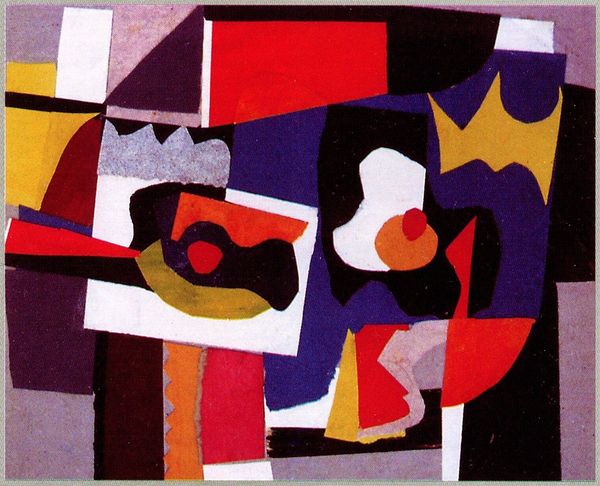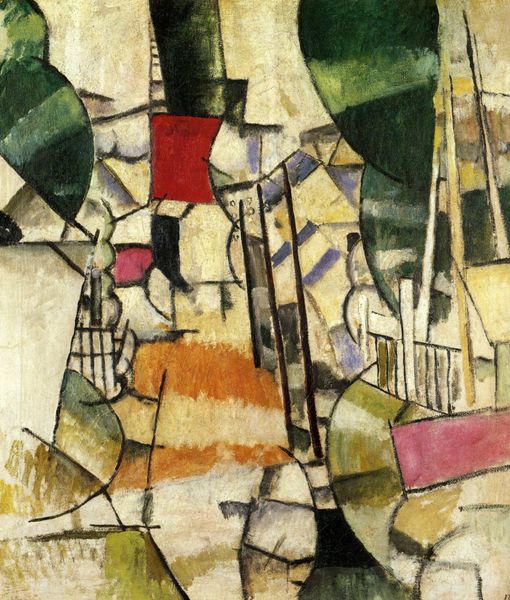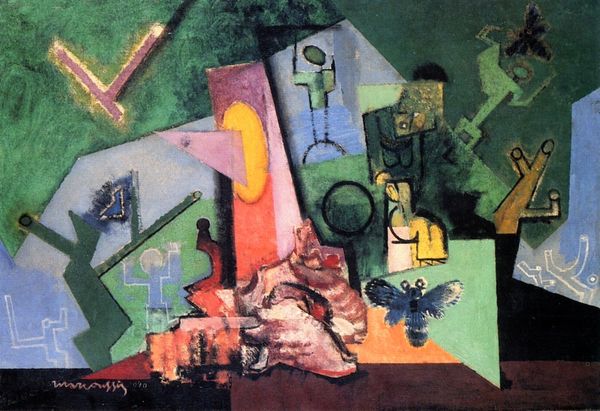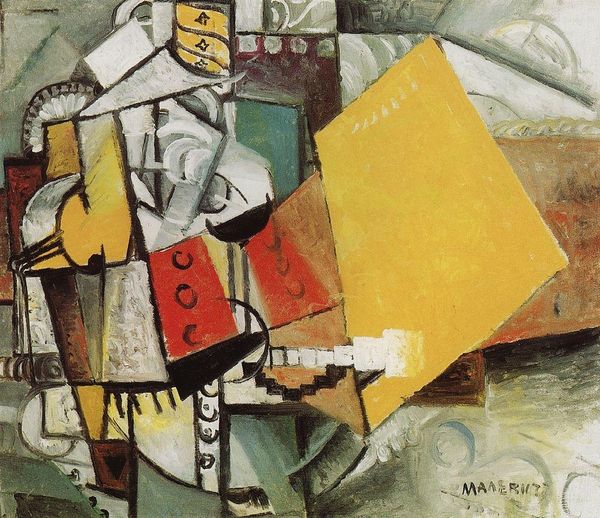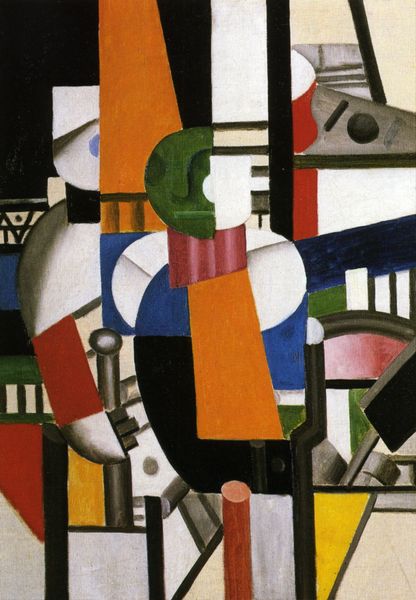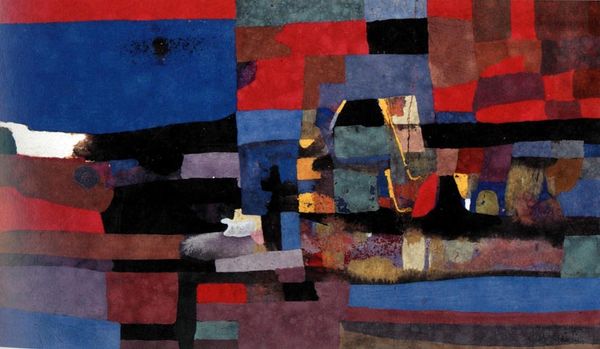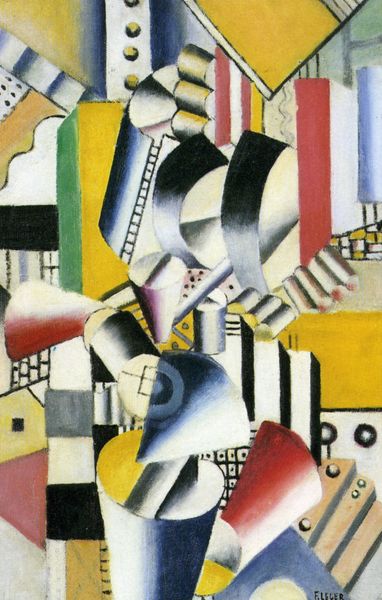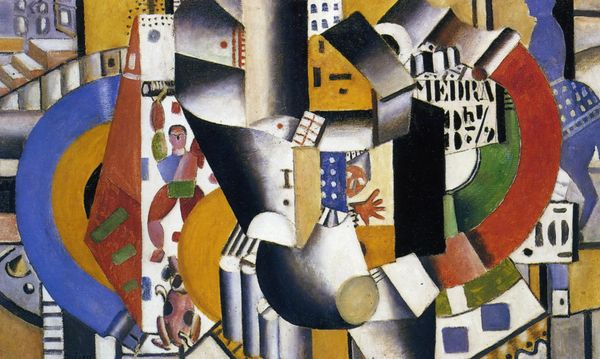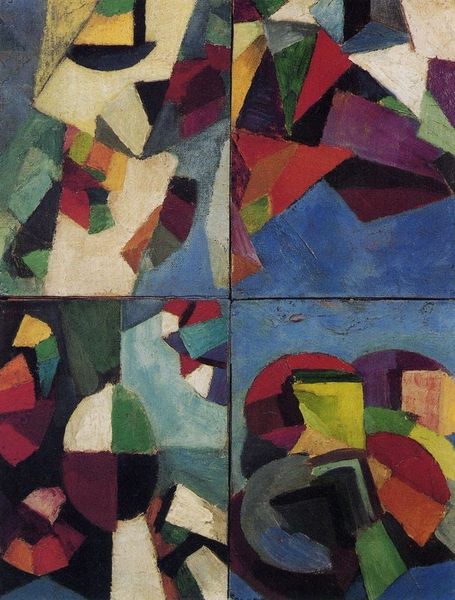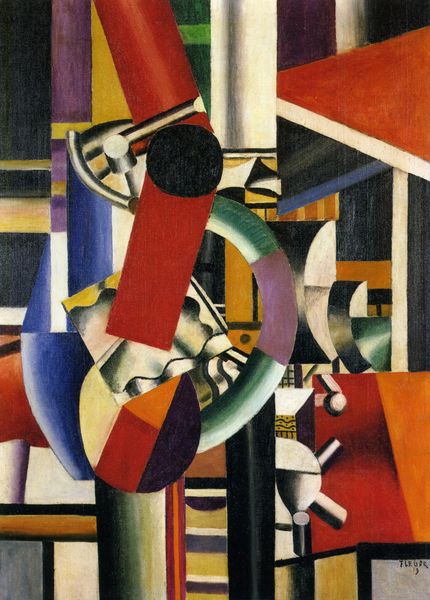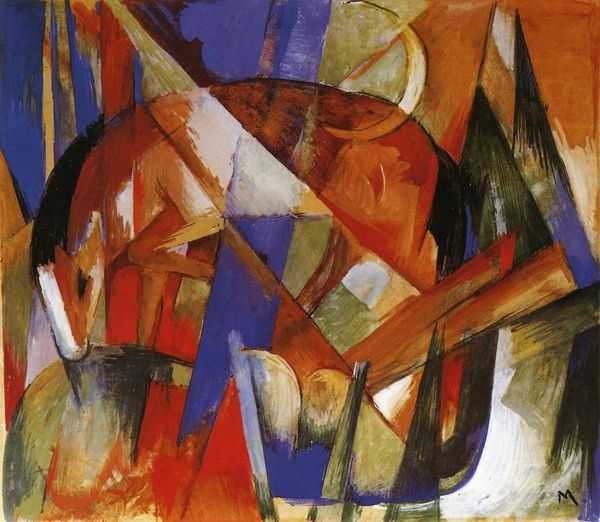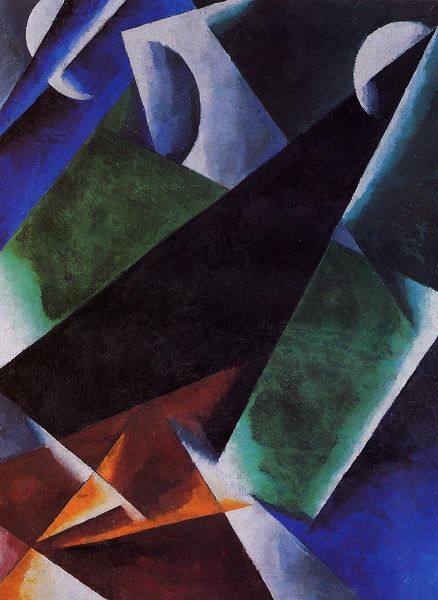
painting, oil-paint
#
abstract expressionism
#
abstract painting
#
painting
#
oil-paint
#
geometric
#
expressionism
#
abstraction
#
expressionist
Copyright: Public domain
Curator: Looking at Victor Palmov's "Still Life" from 1921, I'm immediately struck by its boldness. Palmov, working in Kyiv during a period of intense artistic experimentation, delivers here a striking example of expressionism with geometric features rendered in oil on canvas. What are your initial thoughts? Editor: Honestly, chaos. But controlled chaos. My eyes are bouncing everywhere – dark shapes clashing with those sharp, colourful edges. It feels almost... violent. Like the artist wrestled this still life onto the canvas and pinned it down with blocks of pure colour. Curator: That tension is very present. It reflects a time when avant-garde artists were grappling with representing a world undergoing radical social and political changes. Notice how Palmov flattens the space, denying traditional perspective? This breaks down the established order and suggests a new visual language was needed. Editor: Absolutely, and I feel the mood here. Forget gentle fruit and draped cloths – this is a still life stripped bare. Those blacks, browns, greens...they are unsettling rather than comforting. Almost daring you to find beauty in disorder, to feel something urgent, almost frantic. Curator: Expressionism often does aim to provoke emotional response, to depict the inner experience over outward appearance. Palmov’s choices of colour and fragmented composition align with expressionist tendencies to visualize turmoil, anxiety but also the potential to see and represent something completely new in that era. Editor: I feel that urgency. The forms seem unfinished, or perhaps always being re-formed. There is something honest and unsettling about it, revealing that these forms never achieve a solid balance. Makes you think, what could those shapes signify outside what's painted here? Curator: Fascinatingly, what seems a purely abstract study now can then be understood as a signifier for greater societal upheavals and, perhaps, hopes for the future by radically challenging aesthetic conventions. Editor: Well, that reframes everything for me. I came in thinking beautiful mess but leave contemplating revolution. Palmov got me, didn't he? Curator: He certainly does demand we look closer and connect the visual with the contextual.
Comments
No comments
Be the first to comment and join the conversation on the ultimate creative platform.
